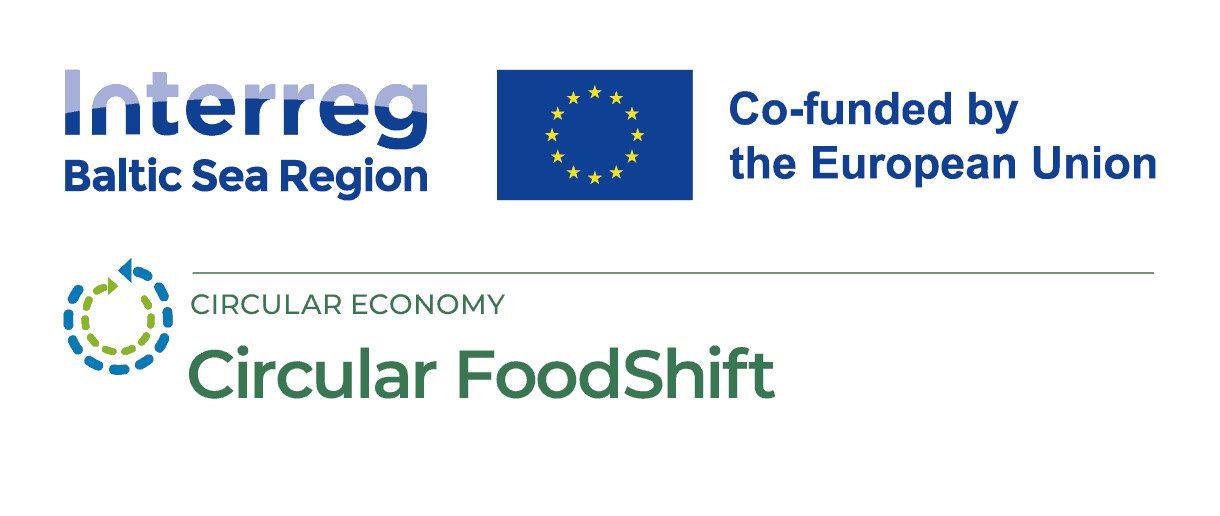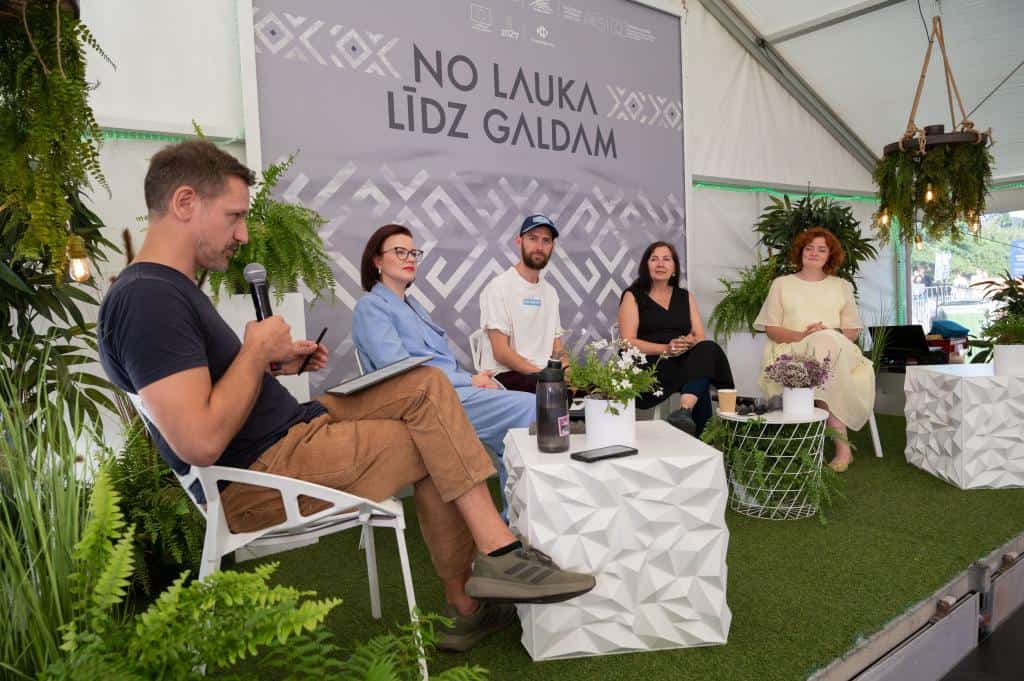
A quarter of the plate in the trash - what is circular food?
27 July 2024
This discussion panel was organised by Latvian Rural Advisory and Training Centre, as one of many discussions in the public discussion and conversation festival “Lampa” that took place in Cesis, Latvia on July 6.
Speakers:
Inga Belousa, representative of Green Liberty, lead expert of the Interreg Baltic Sea Programme project “Circular FoodShift”. A researcher who is well acquainted with the circular economy. Most of life lives in Daugavpils, usually looks at things from a regional perspective, and moves civil society in Latgale.
Jelena Lonska, Associate Professor at Rezekne Academy of Technology, leading researcher.
She is currently leading a project of the Latvian Council of Science on food waste in Rezekne schools. She has also led a team of researchers who have developed and approbated a prototype of an AI-based recommendation system focused on reducing food waste in schools.
Žanis Raivo Behmanis, member of the New Chefs’ Movement, chef of Kuldiga restaurant “Kopa”.
He is an activist from Kuldiga who plans and thinks about how to use everything from the product to the maximum in his kitchen, creating many different creative solutions. Raivo himself says about himself – the use of local products and dances.
Anete Urka, manager of the family café “Bookstore” in Varakļāni, marketing and communication specialist.
Anete has many years of work experience in catering and food production companies. For 5 years he has been working in a family café, takes care of delicious meals, sets festive tables, coffee break tables and organizes restaurant evenings in Varakļāni manor. Conducts cooking master classes for both adults and children.
Main topics covered by this discussion were:
– What do we consider food waste? Why do discarded food volumes continue to rise?
– What we can do to reduce food waste.
– What is such a thing as circular food purely practical in everyday situations.
Namely – where discarded food begins and ends. Can we call discarded food the peels of fruits and vegetables? Can food packaging be included in food waste? Or maybe discarded food is just the one that could still feed others because it would still be edible? And which of all this then do we put in that third of the plate thrown in the trash?
The conclusion from this discussion was that food waste can be categorised in three parts: food loss, leftovers, and waste. In rural parts of the Latgale region the situation is much easier with waste, it can be feed to farm animals and compost it in the garden, but in Latgale region cities this situation is worse, there is no obligation to use compost bins for food waste (Rezekne), in Daugavpils they have those bins, bet they are not used properly. People are not educated or do not see those benefits. More difficult situations are with leftovers, it is forbidden to use them the next day and there are not enough ways to use it again (Žannis shared his experience while he was working in Riga, “3 Chef’s restaurant” there was no place to give this leftover food.) Inga from Green Liberty mentioned that some time ago there were leftover fridges in the Latgale region, where food could be stored, but how can you use it, when you don’t know the origin, and how fresh the raw product is? This question was asked by chef Žanis.
About how to reduce the wood waste all participants were on the same page, that they needed to start with small steps, plan, buy less and more often, and stitch to principle first in the fridge (8-10), first out and organise the food in storages properly. Doing just those little steps we could save above 600 euros worth of discarded food…. As far as I understand, this is about one person in a year, not a household.
All participants agreed that circular food is food that becomes a resource, that can be used and used again, but its main aim is to be used to feed people. We need to educate, we need to share and let people know what products there are and create legislations tad allow us to use leftovers. Al prototype can be adapted (what is created from the project Food Waste (rta.lv)) and used in fine dining and public food sector in order to reduce waste.
Outcomes /results:
In this discussion, for the first time, the concept of circular food in the experience of several stakeholders was discussed. Also, several circular food practices were shared and discussed that highlighted the wide picture of circularity foodshift initiatives and emphasised the importance of multi-stakeholder collaboration.







